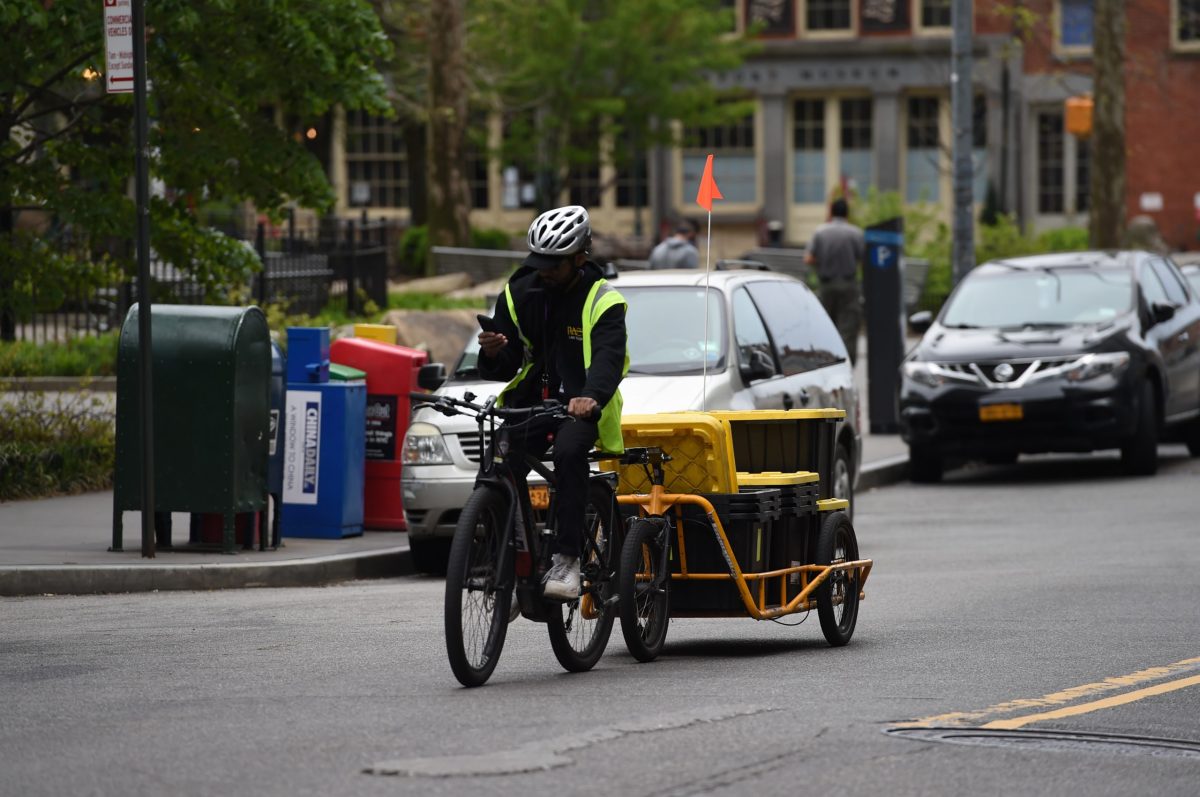New York City should shift part of the NYPD’s budget toward creating street safety improvements that would reduce the department’s traffic enforcement responsibilities, according to a report released Friday.
Transportation Alternatives, a street safety advocacy group, released the report “The Case for Self-Enforcing Streets” which declared that police-based approaches to traffic enforcement “are ineffective and put people of color at risk.” The report further calls on the city to invest in technology and new infrastructure to eliminate safety hazards and reduce the amount of public interaction with police.
“By shifting resources to infrastructural solutions, which work 24/7, are free from implicit bias, and are unable to harass or cause violence, the city can lessen the need for armed police enforcement (e.g. all non-civilian members of the NYPD), reduce traffic injuries and fatalities, and save money,” as noted in the executive summary. “Traffic crashes cost the city’s economy $4.29 billion every year and police misconduct settlements were $237.4 million in 2018.”
The study declared that NYPD enforcement of traffic laws has been “unfair and dangerous to Black New Yorkers” through “on-the-street harassment, unequal summonsing and police violence.”
Citing one example, 90% of all New Yorkers ticketed in 2019 for jaywalking — the lowest possible traffic offense — were either Black or Latinx. In perspective, Black and Latinx New Yorkers comprise 55% of the city’s entire population.
Even the enforcement of riding bikes on sidewalks has proven unequal. Transportation Alternatives reported that more criminal summonses for this offense were issued in Black and Latinx neighborhoods than in white neighborhoods. Also, the occurrence of bike riding on sidewalks was more prevalent in communities of color because there are fewer protected bike lanes there.
The disparate enforcement of traffic laws can be remedied in part through physical changes to the streetscape to make roads safer and eliminate hazards.
The report recommended that the city repurpose part of the NYPD budget toward “self-enforcing” street designs focused on calming traffic. Transportation Alternatives also want the city to focus on using technology to automatically enforce rules related to parking, bus lanes, bike lanes and intersections.
The organization also wants the city to end the crackdown on working bicyclists and delivery workers who use e-bikes, as they too have been targets of unequal enforcement.
“It has become abundantly clear that the NYPD’s approach to traffic safety is not working, especially for New Yorkers of color,” said Marco Conner DiAquoi, deputy director of Transportation Alternatives. “We know what works, and that’s street design that is always on duty, and automated enforcement technology that doesn’t discriminate.”
Already, six City Council Members — Keith Powers, Bill Perkins and Carlina Rivera of Manhattan, Carlos Menchaca of Brooklyn, and Costa Constantinides and Jimmy Van Bramer of Queens —support these and other recommendations in the Transportation Alternatives report.
“The more we work to build our transportation infrastructure and safer streets, the less need there will be for patrolling that leads to uneven enforcement,” said Powers, who chairs the Criminal Justice Committee.
amNewYork reached out to Mayor’s office for comment on the report, and is awaiting a response.
Read the full report on the Transportation Alternatives website.




































